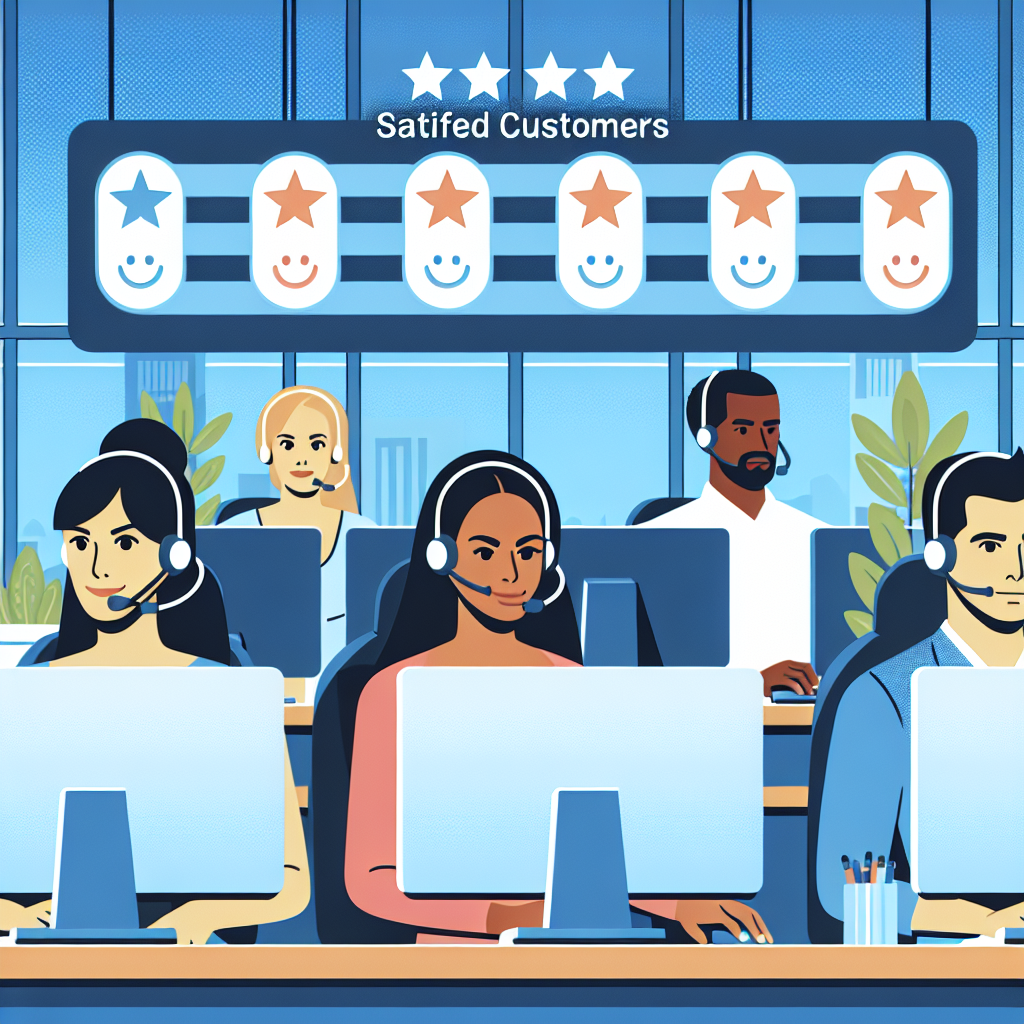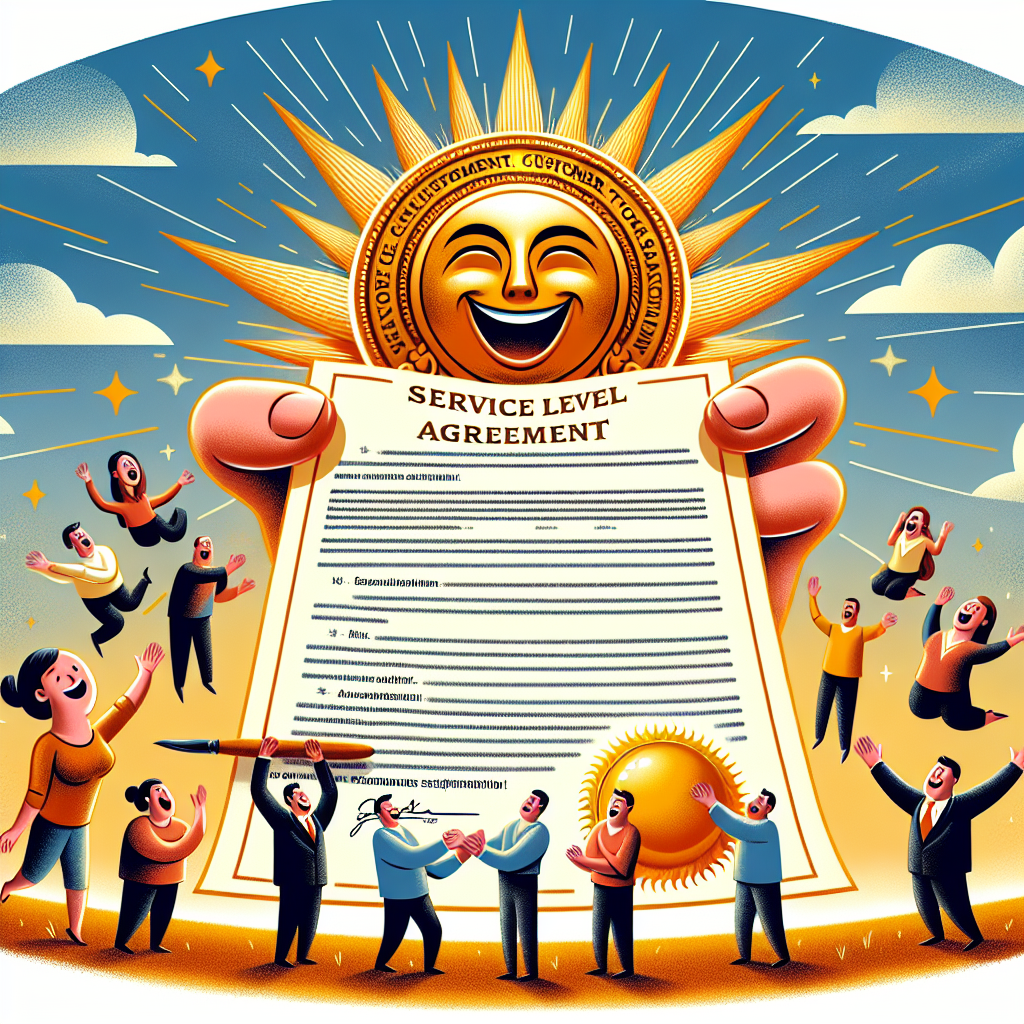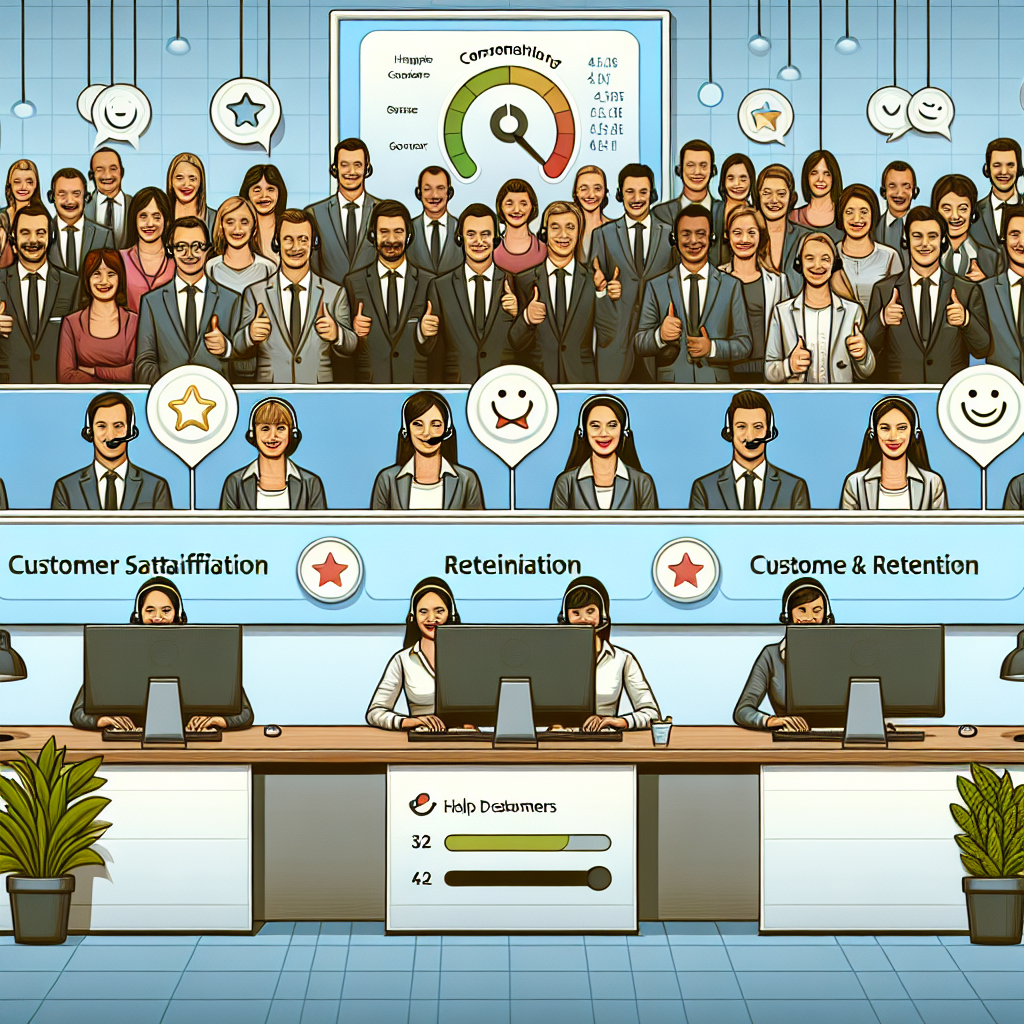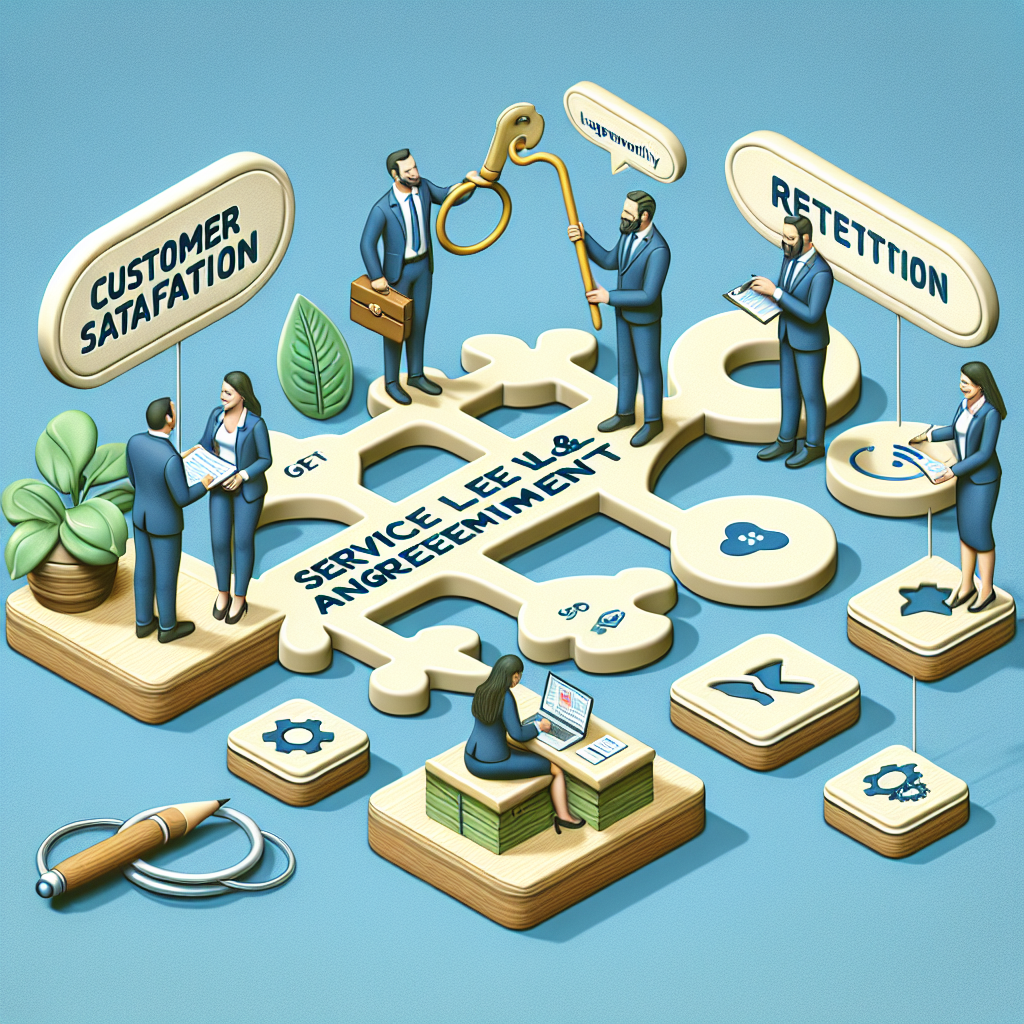Your cart is currently empty!
Tag: Satisfaction

The Role of Service Level Agreements (SLAs) in Ensuring Customer Satisfaction
Service Level Agreements (SLAs) play a crucial role in ensuring customer satisfaction in today’s competitive business environment. An SLA is a contractual agreement between a service provider and a customer that outlines the level of service that the provider will deliver. These agreements are essential in establishing clear expectations and performance metrics for both parties, ultimately leading to improved customer satisfaction.One of the key benefits of SLAs is that they provide a clear understanding of the services that will be provided and the responsibilities of both the service provider and the customer. By clearly defining the scope of services, response times, and performance metrics, SLAs help to eliminate misunderstandings and ensure that both parties are on the same page. This transparency fosters trust and accountability, which are essential for building strong, long-lasting relationships with customers.
SLAs also help to set performance standards and hold service providers accountable for meeting those standards. By specifying key performance indicators (KPIs) such as response times, uptime, and resolution times, SLAs provide a benchmark for measuring the quality of service. This not only helps to identify areas for improvement but also ensures that customers receive the level of service they expect and deserve.
In addition, SLAs help to prioritize service delivery based on the needs and preferences of the customer. By outlining service levels for different types of issues or requests, SLAs ensure that critical issues are addressed promptly and efficiently, while less urgent issues are handled in a timely manner. This helps to streamline the service delivery process and ensure that customers receive the level of service that they require.
Furthermore, SLAs can also help to improve communication between service providers and customers. By establishing clear channels of communication and escalation procedures, SLAs ensure that issues are addressed promptly and effectively. This not only helps to resolve problems quickly but also demonstrates to customers that their concerns are being taken seriously.
Overall, the role of SLAs in ensuring customer satisfaction cannot be overstated. By establishing clear expectations, setting performance standards, prioritizing service delivery, and improving communication, SLAs help to build trust, accountability, and strong relationships with customers. In today’s competitive business environment, having strong SLAs in place is essential for delivering high-quality service and ultimately driving customer satisfaction.

How to Improve Customer Satisfaction with an Effective Help Desk Strategy
Customer satisfaction is crucial for the success of any business. A happy customer is more likely to become a loyal customer and advocate for your brand. One of the key ways to improve customer satisfaction is by having an effective help desk strategy in place.Here are some tips on how to improve customer satisfaction with an effective help desk strategy:
1. Provide timely and personalized responses: Customers expect quick and personalized responses when they reach out for help. Make sure your help desk team is trained to respond to customer inquiries promptly and in a personalized manner. This can help build trust and improve customer satisfaction.
2. Use the right technology: Investing in the right help desk software can make a big difference in improving customer satisfaction. Choose a platform that allows you to easily track and manage customer inquiries, automate responses, and provide self-service options. This can help streamline your support process and make it more efficient for both your team and your customers.
3. Empower your help desk team: Your help desk team is on the front lines of customer support, so it’s important to empower them with the tools and resources they need to do their job effectively. Provide ongoing training and support, encourage collaboration and communication, and recognize and reward their hard work. A happy and motivated help desk team can have a big impact on customer satisfaction.
4. Gather feedback and make improvements: To ensure your help desk strategy is effective, it’s important to gather feedback from customers and use that information to make improvements. Encourage customers to provide feedback after each interaction, and use that feedback to identify areas for improvement. Making continuous improvements to your help desk strategy can help you better meet the needs and expectations of your customers.
5. Monitor performance metrics: Monitoring key performance metrics can help you track the effectiveness of your help desk strategy and identify areas for improvement. Keep an eye on metrics such as response time, resolution time, customer satisfaction scores, and ticket volume. Use this data to identify trends, make adjustments to your strategy, and ensure you’re providing the best possible support to your customers.
In conclusion, having an effective help desk strategy is essential for improving customer satisfaction. By providing timely and personalized responses, using the right technology, empowering your help desk team, gathering feedback, and monitoring performance metrics, you can create a positive and efficient support experience for your customers. Ultimately, a satisfied customer is more likely to become a loyal customer and advocate for your brand.

Improving Customer Satisfaction through Effective Technical Support
Customer satisfaction is a crucial aspect of any business. Happy customers are more likely to become repeat customers and recommend your products or services to others. One way to improve customer satisfaction is through effective technical support.Technical support plays a vital role in ensuring that customers have a positive experience with your product or service. When customers encounter issues or have questions, they expect prompt and helpful assistance from your support team. Here are some tips on how to improve customer satisfaction through effective technical support:
1. Provide timely responses: Customers want their issues to be resolved quickly. Make sure your support team responds to inquiries promptly and sets realistic expectations for resolution times. Implementing a ticketing system can help track and prioritize customer requests efficiently.
2. Empower your support team: Equip your support team with the knowledge and tools they need to effectively address customer issues. Provide training on your products or services and encourage continuous learning to stay up-to-date on new technologies and solutions.
3. Offer multiple support channels: Customers have different preferences when it comes to seeking help. Offer a variety of support channels such as phone, email, live chat, and self-service options like FAQs or knowledge bases. This allows customers to choose the most convenient method for them.
4. Personalize the support experience: Treat each customer as an individual and personalize your interactions with them. Use their name, reference past interactions, and tailor your responses to their specific needs. This shows customers that you value their business and care about their satisfaction.
5. Gather feedback and act on it: Encourage customers to provide feedback on their support experience. Use surveys or feedback forms to collect insights on areas for improvement. Act on this feedback by addressing recurring issues, improving processes, and implementing changes to enhance the overall customer experience.
6. Prioritize customer success: Focus on helping customers achieve their goals with your product or service. Proactively reach out to offer assistance, provide training resources, and share tips for getting the most out of your offering. By helping customers succeed, you build trust and loyalty.
7. Measure and track customer satisfaction: Monitor key metrics such as response times, resolution rates, and customer satisfaction scores to gauge the effectiveness of your technical support efforts. Use this data to identify trends, pinpoint areas for improvement, and celebrate successes.
In conclusion, improving customer satisfaction through effective technical support requires a customer-centric approach, timely responses, personalized interactions, and a commitment to continuous improvement. By prioritizing customer success and providing exceptional support experiences, you can enhance customer satisfaction and build long-lasting relationships with your customers.

How SLAs Can Improve Customer Satisfaction and Retention
Service Level Agreements (SLAs) are a crucial aspect of any business relationship, as they outline the expectations and responsibilities of both parties. When it comes to customer satisfaction and retention, SLAs can play a significant role in ensuring that customers receive the level of service they expect and deserve.One of the key ways SLAs can improve customer satisfaction is by setting clear expectations from the outset. By clearly outlining the services that will be provided, the level of support that will be offered, and the response times that can be expected, customers know exactly what to expect from their service provider. This transparency helps to build trust and confidence in the relationship, ultimately leading to higher levels of customer satisfaction.
In addition to setting clear expectations, SLAs also provide a framework for measuring and monitoring performance. By establishing key performance indicators (KPIs) and metrics within the SLA, both parties can track progress and identify areas for improvement. This data-driven approach allows for more proactive problem-solving and continuous improvement, ensuring that customers receive the best possible service.
Furthermore, SLAs can help to streamline communication and problem resolution processes. With defined escalation procedures and timelines for issue resolution, customers can rest assured that their concerns will be addressed in a timely and efficient manner. This not only leads to higher levels of customer satisfaction but also helps to build customer loyalty and retention.
Ultimately, SLAs can be a powerful tool for improving customer satisfaction and retention. By setting clear expectations, measuring performance, and streamlining communication processes, businesses can ensure that their customers receive the high-quality service they expect and deserve. Investing in well-crafted SLAs can help businesses to not only meet but exceed customer expectations, leading to increased customer satisfaction and long-term customer loyalty.

The Role of Service Level Agreements in Improving Customer Satisfaction
Service Level Agreements (SLAs) are essential tools for ensuring that businesses meet their customers’ needs and expectations. A Service Level Agreement is a contract between a service provider and a customer that defines the level of service that will be provided and the metrics by which that service will be measured. By clearly outlining the expectations and responsibilities of both parties, SLAs help to establish a framework for delivering high-quality service and improving customer satisfaction.One of the key roles of SLAs in improving customer satisfaction is setting clear expectations. By clearly defining the services that will be provided, the level of performance that can be expected, and the metrics that will be used to measure that performance, SLAs help to eliminate any confusion or misunderstandings between the service provider and the customer. This transparency helps to build trust and confidence in the relationship, as customers know exactly what to expect and can hold the service provider accountable for meeting those expectations.
SLAs also play a crucial role in improving communication and collaboration between the service provider and the customer. By establishing regular communication channels, such as regular performance reviews or quarterly business reviews, SLAs help to ensure that both parties are on the same page and can address any issues or concerns in a timely manner. This proactive approach to communication helps to prevent misunderstandings and allows for quick resolution of any problems that may arise, ultimately leading to higher levels of customer satisfaction.
Furthermore, SLAs help to drive continuous improvement and innovation in service delivery. By setting specific performance metrics and targets, SLAs provide a clear roadmap for both the service provider and the customer to work towards. This focus on continuous improvement encourages the service provider to constantly evaluate and enhance their processes and systems, leading to higher levels of efficiency and effectiveness in delivering services. In turn, this results in higher levels of customer satisfaction as customers benefit from improved service quality and reliability.
In conclusion, Service Level Agreements play a critical role in improving customer satisfaction by setting clear expectations, enhancing communication and collaboration, and driving continuous improvement in service delivery. By establishing a framework for delivering high-quality service and holding both parties accountable for meeting their obligations, SLAs help to build trust and confidence in the relationship between the service provider and the customer. Ultimately, businesses that leverage SLAs effectively are better positioned to meet their customers’ needs and expectations, leading to increased customer satisfaction and loyalty.

The Role of Help Desks in Customer Satisfaction and Retention
In today’s competitive business landscape, customer satisfaction and retention are key factors in ensuring the success and growth of a company. One of the most important aspects of achieving customer satisfaction and retention is having a reliable and efficient help desk in place. Help desks play a crucial role in providing customers with the support and assistance they need, which can ultimately lead to a positive customer experience and increased loyalty.Help desks are typically the first point of contact for customers who have questions, concerns, or issues with a product or service. They serve as a central hub for customer inquiries and provide a direct line of communication between the customer and the company. By having a dedicated team of support staff available to assist customers, companies can quickly address any problems or issues that may arise, leading to a higher level of customer satisfaction.
One of the key benefits of a help desk is its ability to provide timely and accurate responses to customer inquiries. By having a team of knowledgeable and well-trained support staff on hand, companies can ensure that customers receive the assistance they need in a timely manner. This can help to alleviate any frustration or confusion that customers may experience, and can ultimately lead to a more positive overall experience.
In addition to providing support and assistance, help desks also play a crucial role in gathering feedback and insights from customers. By monitoring and tracking customer inquiries and issues, companies can identify common pain points or areas for improvement, and can use this information to make necessary changes to their products or services. This proactive approach to customer service can help to enhance the overall customer experience and increase customer satisfaction and retention.
Furthermore, help desks can also play a key role in building customer loyalty. By providing exceptional support and assistance to customers, companies can create a positive and lasting impression that can lead to repeat business and referrals. Customers who feel valued and supported are more likely to remain loyal to a company and recommend it to others, which can ultimately lead to increased customer retention and growth.
In conclusion, the role of help desks in customer satisfaction and retention cannot be overstated. By providing timely and accurate support, gathering feedback, and building customer loyalty, help desks play a crucial role in ensuring that customers have a positive experience with a company. Companies that prioritize their help desk operations are more likely to see increased customer satisfaction and retention, leading to long-term success and growth.

The Role of Help Desk in Customer Satisfaction and Retention
In today’s highly competitive business landscape, customer satisfaction and retention have become critical factors for the success of any organization. One of the key elements in ensuring both customer satisfaction and retention is the role of the help desk.The help desk serves as the first point of contact for customers seeking assistance with products or services. It plays a crucial role in addressing customer queries, resolving issues, and providing timely and effective solutions. By offering a dedicated support system, the help desk helps in building trust and loyalty among customers, ultimately leading to higher satisfaction levels.
One of the primary ways in which the help desk contributes to customer satisfaction is by providing prompt and personalized assistance. Customers value quick responses to their queries and appreciate when their issues are resolved in a timely manner. A well-functioning help desk ensures that customers receive the assistance they need when they need it, leading to a positive customer experience.
Moreover, the help desk also plays a vital role in ensuring consistent and high-quality customer service. By following standardized processes and protocols, help desk agents can provide a consistent level of service to all customers, regardless of the nature of their query or issue. This consistency helps in building trust and credibility among customers, leading to increased satisfaction levels.
Another important aspect of the help desk’s role in customer satisfaction is its ability to gather valuable feedback from customers. By interacting with customers on a regular basis, help desk agents can collect feedback on products, services, and overall customer experience. This feedback is invaluable in identifying areas for improvement and making necessary changes to enhance customer satisfaction.
In addition to customer satisfaction, the help desk also plays a crucial role in customer retention. By providing exceptional customer service and resolving issues effectively, the help desk helps in building long-term relationships with customers. Satisfied customers are more likely to remain loyal to a brand and continue using its products or services, leading to increased customer retention rates.
Overall, the role of the help desk in customer satisfaction and retention cannot be underestimated. By providing prompt and personalized assistance, ensuring consistent and high-quality service, and gathering valuable feedback, the help desk plays a crucial role in enhancing customer satisfaction and driving customer retention. Organizations that prioritize their help desk function are more likely to build strong relationships with customers and achieve long-term success in today’s competitive business environment.

The Role of SLAs in Ensuring Customer Satisfaction and Retention
Service Level Agreements (SLAs) play a crucial role in ensuring customer satisfaction and retention for businesses. SLAs are contracts that outline the level of service that customers can expect from a company, including response times, resolution times, and availability. By setting clear expectations and holding businesses accountable for meeting them, SLAs help to build trust and loyalty with customers.One of the key ways that SLAs contribute to customer satisfaction is by providing transparency and clarity. When customers know exactly what to expect in terms of service, they are more likely to feel confident in their relationship with the company. This transparency helps to build trust and credibility, which are essential for maintaining long-term relationships with customers.
In addition to setting clear expectations, SLAs also help to ensure that businesses deliver on their promises. By establishing specific targets for response and resolution times, companies are held accountable for meeting these goals. This not only improves customer satisfaction by providing timely and efficient service, but also demonstrates the company’s commitment to meeting the needs of their customers.
Furthermore, SLAs can also help to improve communication and collaboration between businesses and customers. By clearly defining roles and responsibilities, SLAs help to streamline the service process and ensure that both parties are on the same page. This can help to prevent misunderstandings and conflicts, leading to a more positive and productive relationship between the company and its customers.
Ultimately, the role of SLAs in ensuring customer satisfaction and retention cannot be overstated. By setting clear expectations, holding businesses accountable, improving communication, and demonstrating a commitment to meeting customer needs, SLAs help to build trust, loyalty, and satisfaction among customers. Businesses that prioritize and uphold their SLAs are more likely to retain customers, drive repeat business, and ultimately achieve long-term success.

How to Improve Customer Satisfaction with Superior Technical Support
In today’s highly competitive business landscape, customer satisfaction is more important than ever. With so many options available to consumers, companies need to go above and beyond to ensure that their customers have a positive experience. One key way to improve customer satisfaction is by providing superior technical support.Technical support plays a crucial role in the overall customer experience. When customers encounter technical issues with a product or service, they expect quick and efficient assistance to resolve the problem. If companies fail to deliver on this front, it can lead to frustration, dissatisfaction, and ultimately, lost business.
To improve customer satisfaction with superior technical support, companies should consider the following strategies:
1. Invest in training: One of the most effective ways to improve technical support is by investing in ongoing training for support staff. By ensuring that employees have the knowledge and skills needed to effectively troubleshoot and resolve technical issues, companies can provide faster and more accurate assistance to customers.
2. Implement a multi-channel support system: Customers have different preferences when it comes to seeking help. Some may prefer to contact support via phone, while others may prefer to use live chat or email. By implementing a multi-channel support system, companies can cater to the diverse needs of their customer base and provide a more convenient and personalized support experience.
3. Provide proactive support: Rather than waiting for customers to reach out with a problem, companies can take a proactive approach to support. This can involve monitoring customer usage data to identify potential issues before they escalate, or reaching out to customers with helpful tips and resources to prevent common technical issues.
4. Streamline the support process: Time is of the essence when it comes to technical support. Customers want quick and efficient assistance, so companies should streamline the support process as much as possible. This can involve implementing self-service options, providing clear and easy-to-follow troubleshooting guides, and reducing wait times for phone or chat support.
5. Gather feedback and continuously improve: Customer satisfaction is not a one-time effort, but an ongoing process. Companies should regularly gather feedback from customers about their support experience and use this information to make continuous improvements. By listening to customer concerns and addressing them promptly, companies can build trust and loyalty with their customer base.
In conclusion, providing superior technical support is a key driver of customer satisfaction. By investing in training, implementing a multi-channel support system, providing proactive support, streamlining the support process, and continuously improving based on customer feedback, companies can ensure that their customers have a positive experience and remain loyal to their brand.

Why Proactive Technical Support is Key to Customer Satisfaction
In today’s fast-paced world, customer satisfaction is crucial for the success of any business. With the rise of technology and the increasing reliance on digital platforms, technical issues can arise at any moment. This is where proactive technical support plays a vital role in ensuring customer satisfaction.Proactive technical support involves anticipating and addressing potential technical issues before they occur. By taking a proactive approach, businesses can prevent problems from escalating and causing disruptions to their customers. This not only helps in avoiding downtime but also builds trust and loyalty among customers.
One of the key benefits of proactive technical support is that it shows customers that their needs are being taken seriously. By actively monitoring systems and addressing potential issues before they become major problems, businesses demonstrate their commitment to providing a seamless and uninterrupted experience for their customers.
Furthermore, proactive technical support helps businesses stay ahead of the curve and adapt to changing technology trends. By constantly monitoring and updating systems, businesses can ensure that they are using the latest technology and tools to provide the best possible service to their customers.
Another important aspect of proactive technical support is the ability to provide timely and efficient solutions to customer issues. By identifying and resolving issues proactively, businesses can minimize the impact on their customers and prevent frustration and dissatisfaction.
In today’s competitive market, customer satisfaction is more important than ever. Businesses that prioritize proactive technical support are more likely to retain their customers and attract new ones. By investing in proactive technical support, businesses can create a positive customer experience and differentiate themselves from their competitors.
In conclusion, proactive technical support is key to customer satisfaction. By taking a proactive approach to addressing technical issues, businesses can prevent disruptions, build trust and loyalty among customers, stay ahead of technology trends, and provide timely and efficient solutions. Investing in proactive technical support is essential for businesses that want to thrive in today’s digital age and create a positive customer experience.
